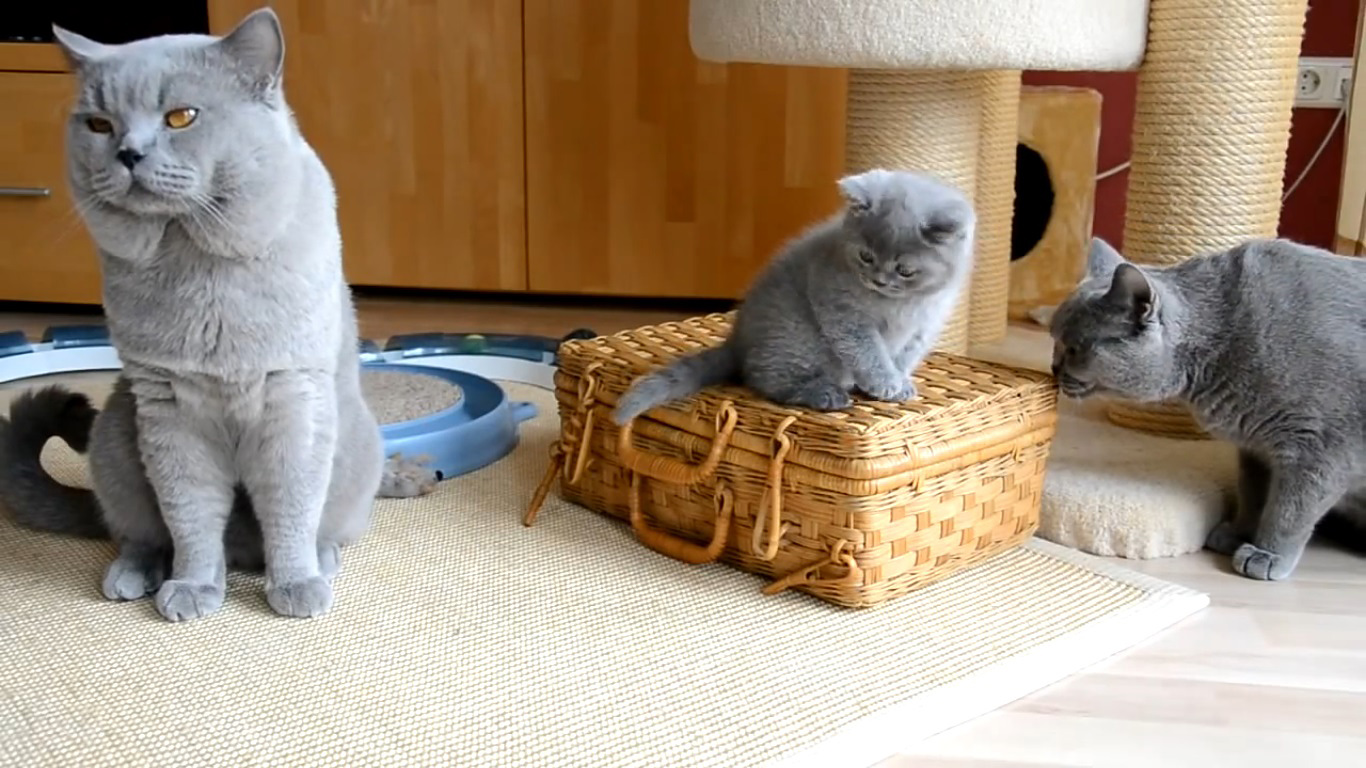
| Country of Origin: | United Kingdom |
| Colors: | Black, blue, white, red, cream, chocolate, lilac, cinnamon and fawn |
| Average Size: | Weight: 12 – 18 lbs (3.6- 5.4 kg) Length: Large |
| Life Span: | 14-20 years |
| Coat: | Short |
| Personality: | Indoor-only, ideal human companion |
| Characteristics: | Energy: Active Talkative: Little Kid Friendly: Yes Less Allergic: No |
Many European cat breeds suffered during the World War II, but some say that the worst happened with British Shorthair cats. Some years immediately after the war, there were very few males with pedigree, and because of that, some breeders bred their dogs with the Oriental Shorthair type, which led to the disappearance of their dense body structure they used to have originally.
During the fifties this changed as breeders started a new trend by mating them with blue Persian cats. Although this brought back some breed qualities and softer hair and hair similar to Persian cats, this also meant that some of the kittens were born with longer hair.
Standards set by the British and European shorthaired cat require flat nose – which is difficult to achieve when using Persian heritage, even if Persian cats that have grown in Europe don’t have such a snub nose like in America.
A rare feature of British Shorthair breed apart from most shorthaired cats is that approximately half of all British shorthair cats have blood type B.
As with all British shorthair cats; the ideal one has a lovely rounded face with full cheeks, and tight body with strong and broad shoulders, deep chest and strong, short legs. The ears are small with rounded tips and well apart. The nose is short and straight, and the fur color matches the color of the nose.
Cream British Shorthair, which is recognized by the twenties, is very difficult to breed in an ideal coat color: pale cream shade with no stripe markings. Color is often too red and also has the remains of the tail stripes and markings on her face.
Turtle color cats are rare, but they are also very difficult to grow in accordance with the standards of the breed, which require mixing of color with no visible stains, patterns or striped markings. The skin of the nose and the pads of their paws must be in accordance with the color of the coat. On stage soon appeared red cats. Ginger – red are common in the UK as cats without a pedigree.
This is also an easygoing cat breed, and they tolerate a fair amount of physical interaction therefore they are perfect for families with children. They are great for apartment living as they like to be indoors. They don’t demand a lot of attention. They are not very destructive although they enjoy the company of other British Shorthair cats.
This cat breed doesn’t require a lot of grooming, but it is recommended that the fur is occasionally brushed.














The British Shorthair Cat is a cute domesticated cat with a plush, short, and dense coat. This coat may crack or crisp on the cat’s body contours. I love their large eyes especially when it is in British Blue color. However, there are also some British Shorthair Cats with gold or copper colored eyes. They have cute chubby cheeks even when their bodies are muscular. Males can weigh up to ten pounds while females can weigh up to seven pounds. It has thick legs and broad head. They also have cute snub noses. They are great around other people even with children.
I love it. How do I purchase one?